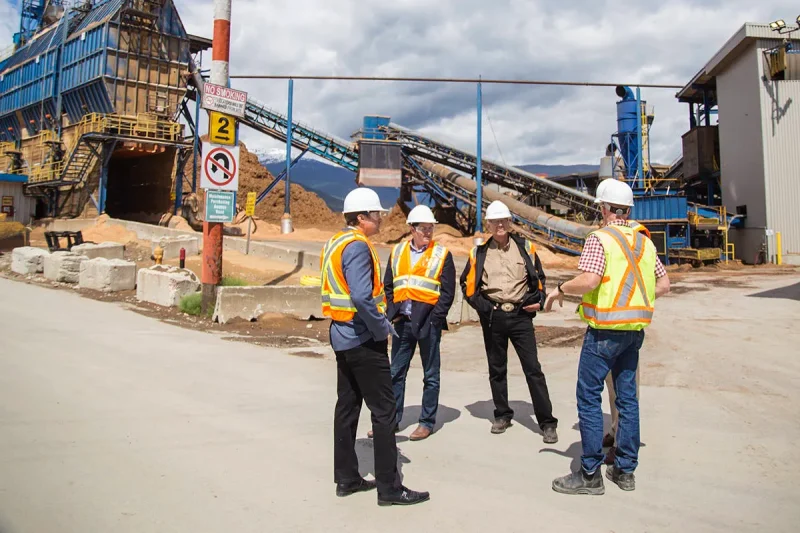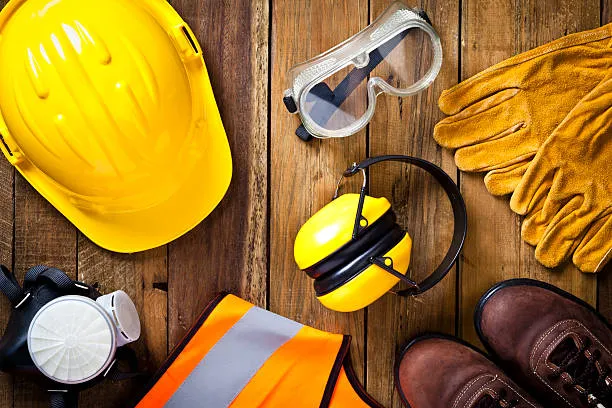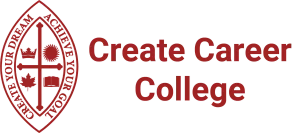What’s the Workers’ Compensation Board?
In British Columbia, the Workers’ Compensation Board is operating as WorkSafeBC, which is an agency established by provincial legislation. It’s mainly mandated to provide a safe environment for employees and partner with employers to prevent workplace injuries, illnesses, and diseases; rehabilitate those who are injured, and take time to return to work; provide compensation for worker’s loss of wages, and ensure sound financial management for a viable workers’ compensation system. WorkSafeBC operates through education, consultation, and enforcement. It also performs workplace inspections and investigations of serious injuries or fatalities.

Even though Canada’s medical insurance usually covers most injuries and illnesses, loss of wages and disabilities have to be measured carefully, sometimes injuries at work can result in workers’ loss of abilities in certain fields or serious mental or financial damages. In that case, the Workers’ Compensation Board can validate and specifically plan for injured workers and make sure they are compensated properly, and it’s an important act in Canada’s welfare system. Occupational Safety and health do not apply to the mining industry and federally regulated employers (they are under the Federal Labour Program).
WorkSafeBC is British Columbia’s own compensation insurer which covers more than 200,000 registered employers and 2.3 million workers. WorkSafeBC is dedicated to create a province free from workplace injury or illness, improve return-to-work outcomes, prevent disability, accessibility and ensure stakeholders’ rights and maintain the organization’s financial stability. The legislation is enforced as the Workers Compensation Act. Everyone at work has a responsibility to maintain workplace safety and health, not only the employers and supervisors need to protect workers’ rights, but also employees are responsible for a safe work environment. The WCA is used to ensure everyone can preserve their rights and get help from the province.
WorkSafeBC
An Overview of WorkSafeBC
In British Columbia, the Workers’ Compensation Board is operated as WorkSafeBC, and WorkSafeBC is led by the Board of Directors. They are people who are chosen to represent the stakeholders served by WorkSafeBC. The Board of Directors is responsible for representing public interest and stakeholders’ interests such as workers and employers. The Board consists of professionals chosen by the provincial Minister of Labour from various industries such as health care/rehabilitation, actuarial, law, occupational health, and safety. Current members of WorkSafeBC’s Board of Directors are Jeff Parr, Baltej Dhillon, Michelle Laurie, Lee Loftus, Rebecca Packer, Brooks Patterson, Lorna Pawluk, Donald Smith, Kay Teschke, and Anne Naser. These professionals will be in charge of advising on the WCA.
WorkSafeBC was founded in 1917 and has been helping improve the occupational health and safety of British Columbians since. Professionals built a comprehensive and sustainable insurance system that exclusively serves workers’ and employers’ workplace safety. With revisions and more and more elites joining the Board, the system now is no-fault and successfully operating as one of the most important workplace legislation in the provincial labour sector.

How to Search on WorkSafeBC Website
WorkSafeBC’s official website is WorkSafeBC. To search for health and safety guidelines by industry, you can find a complete list of industries in Canada, starting from A to Z Industries. For example, searching for Agriculture safety, there are many types of agricultural environment shown on the website, Berry & vegetable farms, dairy farms, and many more. Find your workplace and resources links are listed on the webpage as well, for example, on the dairy farms page, there are several harms and incidents prevention like Ammonia, Hydrogen sulfide and slips, trips, and falls. And there are dangers and prevention guides for each hazard, some may include some videos and related articles as well.
There are many other services on WorkSafeBC as well, to establish a safe workplace, the basic requirements and guidelines are listed on the website. From getting started, roles, rights & responsibilities, first aid requirements, managing risk, health & safety programs, workplace inspections, training & orienting workers, supervising for health & safety, etc. You can find the guidelines here: Getting started. Also, for workers who are concerned about workplace safety, they can search for an employer who acquired the certificate of recognition (COR). COR is a voluntary program that recognizes employers who are proactive about improving workplace safety. There are two types of COR: Occupational Health and Safety (OHS) and Injury Management/Return-to-Work (RTW). To search for employers who have a COR: COR
To partner with WorkSafeBC, employers are required to provide worker instruction and training. If you are a new employer, make sure to follow the training guidelines on the education, training & certification section on the website: Education, Training & Certification. Also, for training program providers and course developers, they have to get approval from WorkSafeBC in order to operate certain programs such as firefighters, occupational first aid attendants, danger tree risk assessors, blasters, etc. Those professions require very high standard training and many certified instructors to conduct. To find out how to get your training program safety-approved: WorkSafeBC Training Program

When facing hazards and exposures, don’t know what to do? WorkSafeBC’s website has a complete guide for you. For some highly technical or chemical-related jobs, there could be some chemical hazard you are not aware of. On the hazards & exposure page, there’s a list of potential workplace hazards: biological hazards, chemical & materials, extreme temperatures, radiation, and symptoms related to those hazards. Find the page here: Hazards & Exposures.
Moreover, WorkSafeBC has a page listed common workplace injuries and diseases and provides a variety of resources on how to prevent or treat when you face these situations. Also, you can find links on register exposure to a hazardous substance or submit a notice of project form on the injuries & diseases page. Injuries & Diseases If you feel like working in an unsafe environment, don’t forget to report unsafe working conditions on WorkSafeBC. If you are an employer and workers are injured or ill during work, make sure to open an employer investigation on Employer Investigation.
WorkSafeBC Insurance
The insurance page includes all the information you need on WorkSafeBC coverages. Almost all employers in BC are required to have WorkSafeBC coverage unless the payment and hiring methods are special and exempt. WorkSafeBC has a page on how to find out whether you need coverage or not regarding common occupations. The biggest benefit of having WorkSafeBC coverage is that it protects you from lawsuits by workers, it covers the cost when workers are injured or ill on the job and experience disabilities or loss of wages.
No-fault protection, tools, and expert advice, collective liability are what’s essential for employers. For workers, they are automatically covered for any work-related injuries, illnesses, or diseases. There’s no need for a complicated lawsuit, and workplace investigation will be fair and professional. Compensation, support for recovery, rehabilitation, and safe return to work are also goals of WorkSafeBC.
The Workers’ Compensation Act
WCA is the official legislation used to protect both employers’ and workers’ rights when workers are injured on the job. There are eight parts of WCA. Part 1 Scope of Act includes 4 divisions, is an overview of the whole Act, and introduces the definition and the scope of the OHS (Occupational Health and Safety) provision. Part 2 OHS explained the rights and responsibilities of the workplace, and how OHS protects workers and employers. Part 3 Workers’ compensation system illustrated the rules, legal effects, and regulations of the compensation system.
Part 4 Compensation to Injured Workers and their Dependants is about compensations for a worker’s injuries, occupational disease, mental disorder, or death. Part 5 Accident Fund and Employer Assessment address the collection of employer assessments. Part 6 is Review of Board Decisions which are made by WorkSafeBC and the Chief Review Officer. Part 7 is Appeals to Appeal Tribunal. The last part is to explain WorkSafeBC’s power and governance, called Worker’s Compensation Board, and General Matters. For the complete Workers’ Compensation Act, visit: Workers’ Compensation Act.
How to apply for WorkSafeBC Insurance
To apply for coverage on WorkSafeBC is very simple, the application can be submitted online, or by mail, or by fax. First, to provide a list of information including the legal name of the firm, WorkSafeBC account number, business vehicle/equipment, the start date of the operation, estimated payroll, start date of the first worker, company’s address, etc. And WorkSafeBC will start reviewing the application, and determine if one is eligible for coverage.
There are several conditions WorkSafeBC will consider: what type is the company, what services or product this company provides, how much is the payroll, what kind of equipment is provided, etc. After the eligibility, WorkSafeBC will also consider if the employer is an independent firm or labour contractor, the classification and premium, and the date of the coverage. The final process will be a notification from WorkSafeBC. To apply online: Apply For Coverage

WCB and Education
Many workers experienced injuries, disabilities, and illness on the job. Some of them are not able to return to work, WCB’s compensation may include some paid special training, and help them acquire a new job or learn new skills depending on their status. In this kind of situation, WCB can provide funding for workers that are unable to return to their original job, and help them find another way to work. Many educational institutions or colleges, universities are accepting students sent by WCB. In Create Career College, we fully support students who are sponsored by WCB, and we try our best to help students switching their careers with our Co-op diploma programs. Our hospitality management co-op program will provide students a career path and guarantee students’ employment during the program.


